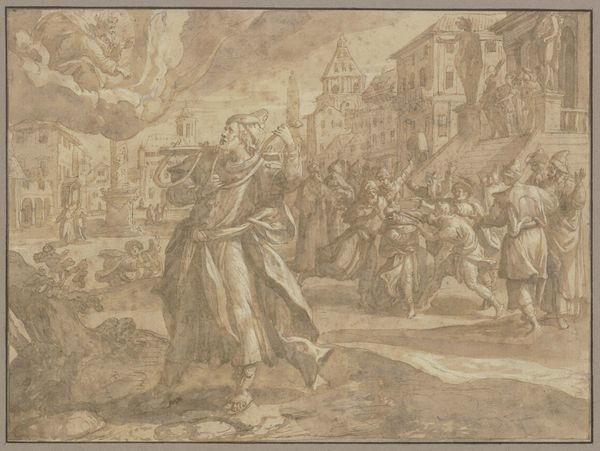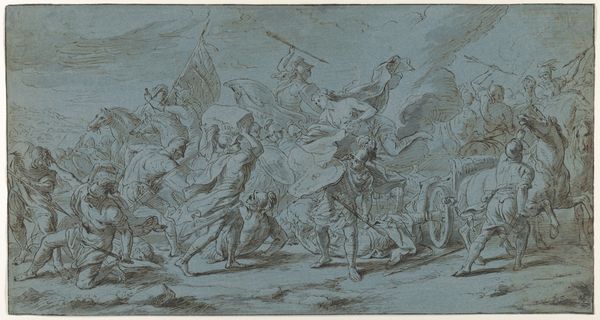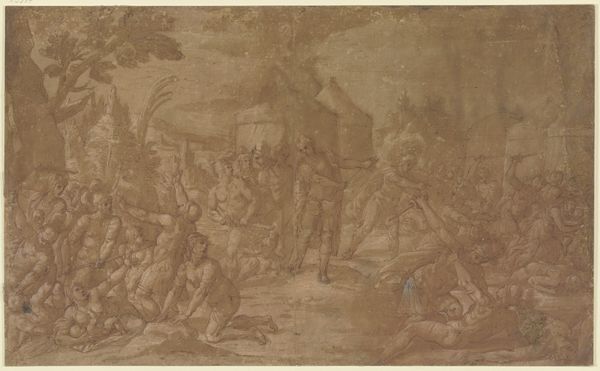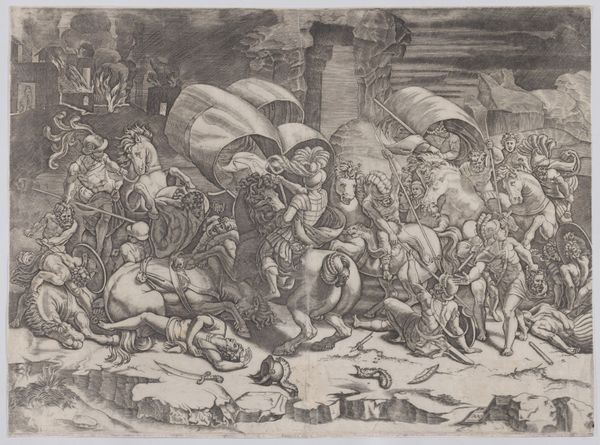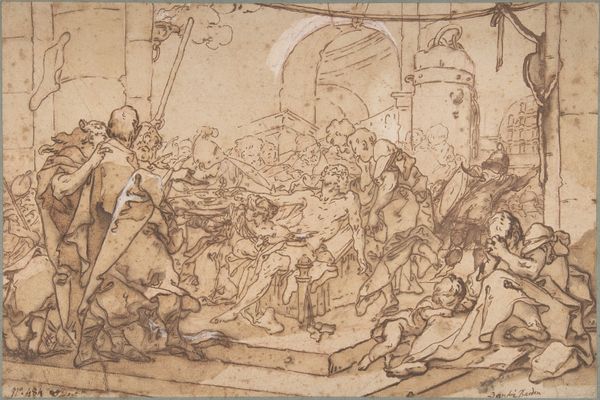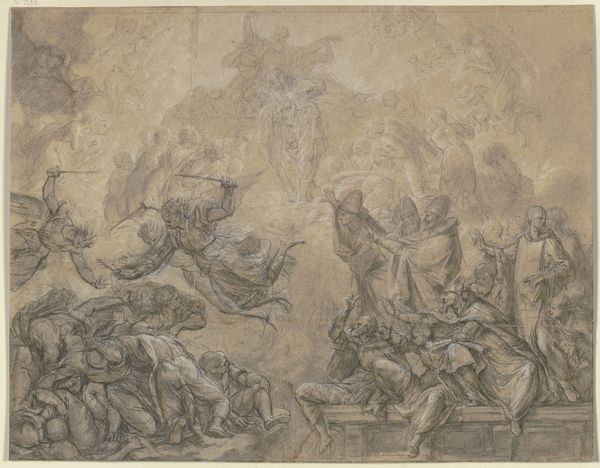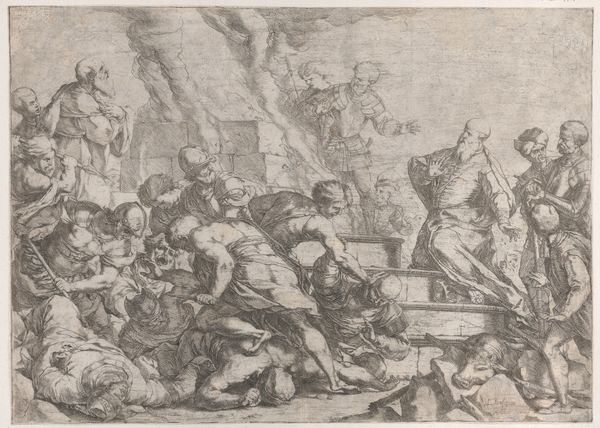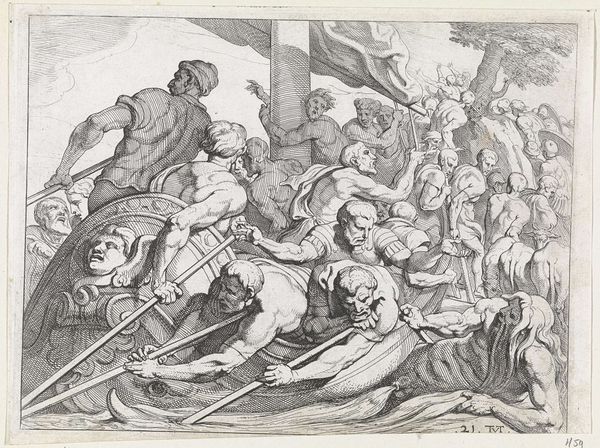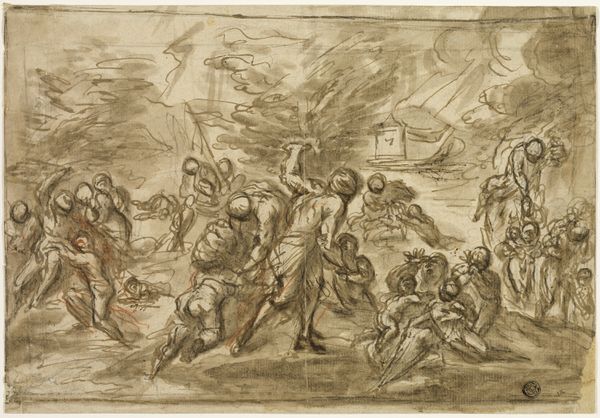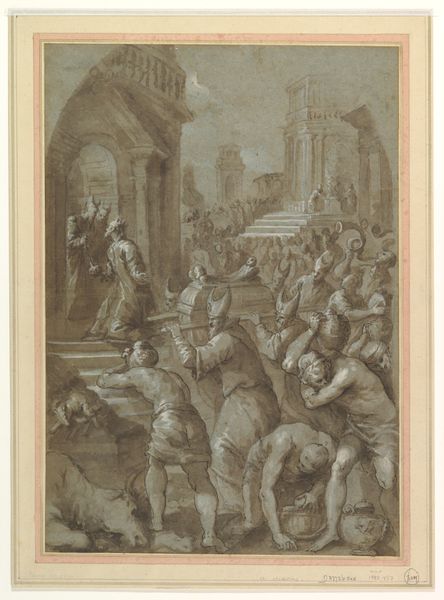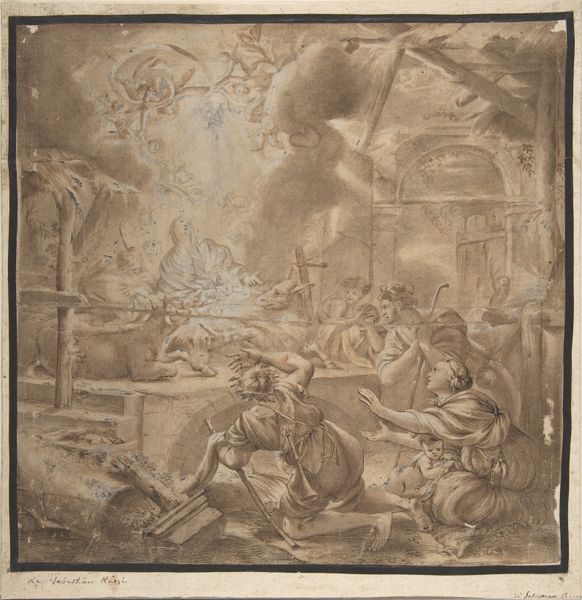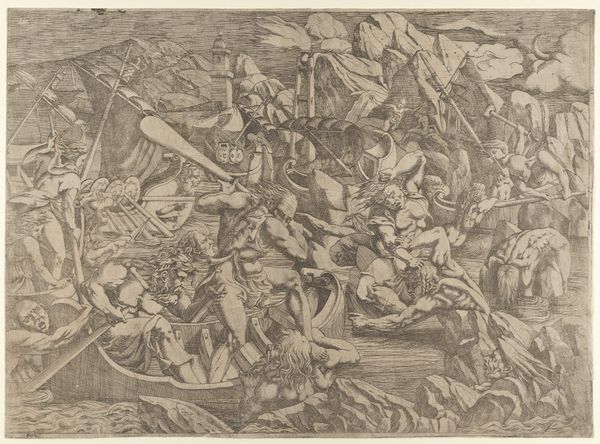
Nächtliches Schlachtgeschehen vor den Toren einer belagerten Stadt in Flammen
0:00
0:00
drawing, gouache, paper, ink
#
drawing
#
narrative-art
#
gouache
#
figuration
#
paper
#
11_renaissance
#
ink
#
13_16th-century
#
genre-painting
#
history-painting
Copyright: Public Domain
Curator: Maarten de Vos' "N\u00e4chtliches Schlachtgeschehen vor den Toren einer belagerten Stadt in Flammen," executed in ink, gouache and wash on paper, captures a frenetic battle scene. The drawing is currently held in the St\u00e4del Museum. Editor: The composition is strikingly dynamic. The eye is immediately drawn to the melee in the foreground and the burning city in the background, with this muted palette enhancing the chaos. Curator: It’s a dense layering of symbols. The figures themselves—engaged in fierce combat with swords and shields—become potent representations of power and conflict. Note their classical attire. The entire city ablaze is, itself, also an indication of an event fraught with symbolic value for de Vos. Editor: The rendering of light and shadow is used masterfully to highlight key moments, but there is no naturalism or perspective as we understand it in the later Baroque style. Look how the linear rhythm in the jostling bodies contributes to an overall feeling of impending doom. How do we connect it to period? Curator: Likely a narrative concerning the late 16th-century religious conflicts; given de Vos' background in Antwerp and history of history painting, one could suppose he created this representation to comment on a historical religious-political event. Editor: Right, there are echoes here. Thinkers often use "light" to illustrate divine reason as humanity gropes within a dark age; I note how the symbolic city’s literal burning and destruction might reveal de Vos’ message. Curator: Precisely. What might at first glance appear to be only violence turns out to reflect on the period's societal values regarding order and moral behavior, and on questions of leadership, through iconographic elements, when you break it down formally and consider structure. Editor: I think a study like this allows for contemplating war’s iconography itself and questioning how that affects a population and culture as a whole. Fascinating food for thought, isn’t it? Curator: Absolutely, it’s how an artist like de Vos builds his image through composition, material, and medium.
Comments
No comments
Be the first to comment and join the conversation on the ultimate creative platform.
